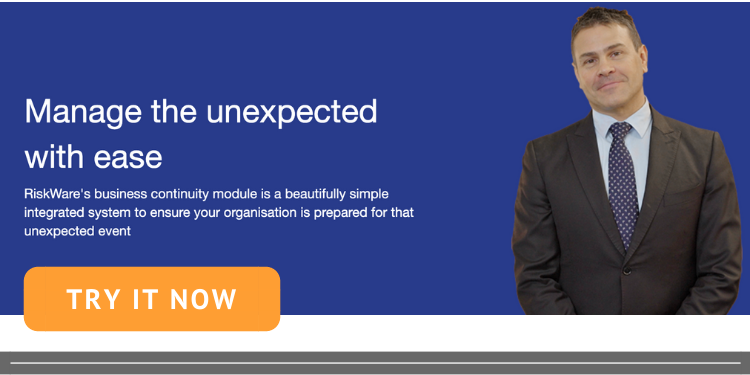Organisations today continue to face an ever-evolving set of challenges in order to remain both relevant and resilient in the environment in which they operate. Rapid shifts in technology, client expectations and products are one thing, but then overlay this with a constantly changing legal, legislative and regulatory environment, and it seems that we are always trying to play catch up.

Just like the changing environment we live in, business continuity has evolved too. It is no longer merely a matter of responding to large scale events that have been predetermined and planned for. It is now about becoming resilient and adaptive to any changes that can occur and that have the potential to disrupt your operations or environment.
Given this and all its associated challenges, it has never been more important to ensure that your business can not only continue to operate during a disruptive event, but also become resilient and adaptive enough to continue to grow, irrespective of what the world throws at you.
The simple fact is, few organisations invest appropriately in their business continuity planning and preparedness as it is never front of mind when things are going well and often too late once met with a disruptive event. As a result, when seeking investment from either management or the board, often other business priorities take precedence over “that thing” that may or may not occur.
One of the key success factors in striving to become a resilient organisation is the ability to garner business buy-in and ongoing support to prioritise business continuity efforts. To engage the business once a year in an overly complex process does little more than make it a compliance activity that is seen as a chore rather than any activity that can protect the organisation and potentially create value and understanding.
This is where business continuity software can be an incredibly useful tool. When exploring your software options, however, there are a few things to keep top of mind.
4 Things to Consider When Choosing Business Continuity Planning Software
- Software can’t replace a team: Many organisations look to bring in a software solution to manage business continuity, assuming that once implemented, the system will do everything for them. Whilst this would be wonderful, the reality is that systems don’t make business decisions. They don’t weigh up what is happening in their environment to select the best possible outcome. This is done through engagement and conversation and is ultimately why disruptive events still require human input.
- Software should kickstart conversation and empower decision making: Software solutions can be a wonderful enabler, but they too need to become broader than a simple repository of information and data. To truly leverage a software solution, it needs to be able to provide information back to an organisation that generates the right conversation with the right people. It needs to empower decision makers to have confidence in the judgements they make and needs to enable a growth in maturity through conversation and understanding.
- Software should be user-friendly: To keep an organisation engaged and willing to use the system, the software you employ should be designed with the end user in mind and not require a computer science degree to operate. The premise to keep things simple is often met with reluctance because more is more… right? The truth is the easier a process or system, the more uptake you have, which ultimately provides a richer and more robust data set that people are happy to engage with. It means that business continuity is no longer seen as an onerous task, but something that is just part of what we do.
- Software should offer insight, not just data: Once you gain this new found data, you need a system that doesn’t simply report and present the raw data, but provides you with the tools and intelligence to translate that data into meaningful insights that allow your organisation to understand its environment and facilitate the process of becoming truly resilient.
RiskWare’s Business Continuity Module has been built with these considerations in mind. From allowing you to see single point of failures at the click of a button or the ability to respond, manage and recover from disruptive events through the use of your mobile phone, RiskWare looks to not only simplify the process of data capture but then use this to empower an organisation to have confidence in its ability to respond and recover.
When making the decision to get a business continuity solution, be mindful that if your goal is to build organisational resilience, then the software’s role is not merely to be a repository of data and information, but to be something that instigates discussion and helps keep the business engaged all the while remaining simple enough for anyone to use.
When looking at software solutions, don’t be afraid to ask more of them and remember, simplicity of use, more often than not, offers great rewards.
To learn more about how RiskWare is making the world a little less risky, visit us at RiskWare.com.au.











Leave a comment